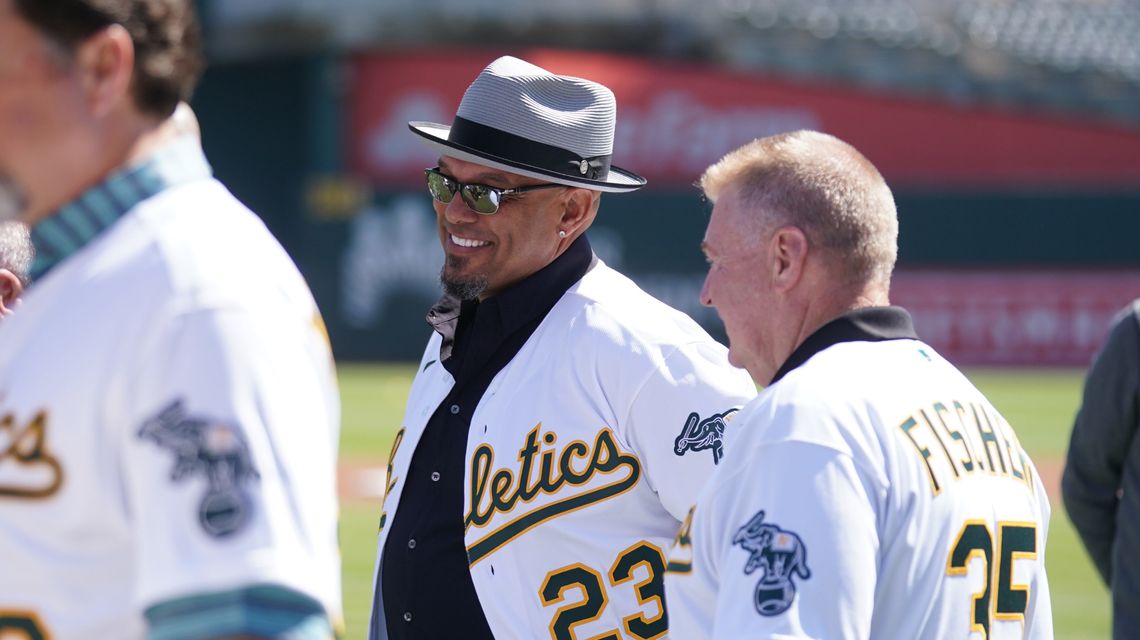
David Justice thrived during Oakland’s ‘Moneyball’ experiment
OAKLAND, Calif. (BVM) — Eleven years ago, the movie “Moneyball” hit the big screens. It tells the story of how the Oakland Athletics introduced the use of sabermetrics into baseball to compete against wealthier teams. One of the players who was highlighted in the movie was former All-Star David Justice.
Early Career
Justice made his first big league appearance on May 24, 1989, where he had one hit in five at-bats for the Atlanta Braves. However, the following year he would go on to win NL Rookie of the Year after hitting 28 home runs and recording 78 RBIs. Justice would play six more seasons with the Braves and his best season came in 1993 when he finished third in MVP voting. He batted .313, hit 40 HRs, and had 120 RBIs.
Following a great ‘93 season, Justice and the Braves made it to the World Series in 1995, where they faced the Cleveland Indians. The Braves won in six games, and one of the most critical hits came from Justice.
Justice’s career would continue, but not in Atlanta. The Braves traded Justice to Cleveland before the 1997 season, where he’d have another MVP-caliber season. He batted .329, hit 33 HRs, and registered 101 RBIs. Justice would appear in another World Series in Cleveland, but it’d fall to the Florida Marlins.
Justice was then traded to the New York Yankees during the 2000 season. He caught fire during the playoff run and was named the ALCS MVP. Justice and the Yankees would go on to win the World Series. Justice hit 41 home runs between playing for Cleveland and New York.
2002 season
On Dec. 14, 2001, after being traded from the Yankees to the New York Mets, Justice was traded to the Athletics. Here he’d play his final season in MLB. But unbeknownst to him, it’d be a crucial season for the future of baseball. And Justice would prove to play an instrumental role in establishing that it worked.
At 37, Justice hit .266, 11 HRs and had 49 RBIs. But more importantly, he had an OBP of .376, two points short of his career average.
Justice won AL Player of the Week in his first week with the team. Justice would appear in 118 games for the Athletics, and he’d help the team win 20 consecutive games and reach the ALDS, where they’d fall to the Minnesota Twins in five games.
“It was a lot of fun that year,” Justice said in an interview with FabTV.
Moneyball’s lasting effect
Although the Athletics lost in the divisional series, many noticed Oakland’s success. One team that took an interest in Oakland’s then general manager, Billy Beane, was the Boston Red Sox. Boston was so interested in having him be their GM that they offered him $12.5 million. The Red Sox won the World Series two years later, and Bene continued as the Athletics GM until 2019.
However, Bene and the Athletics weren’t the only teams successfully using sabermetrics. Including Boston, the team with the most recent success using this strategy has been the Tampa Bay Rays. In 2020 they reached the World Series with the third-lowest salary ($28.2 million) in baseball.
The use of sabermetrics and analytical data is now used by most MLB teams. And with this new phenomenon now playing an instrumental part in baseball, fans and players of the sport can always look back to Beane and the Athletics as pioneers in America’s pastime.






